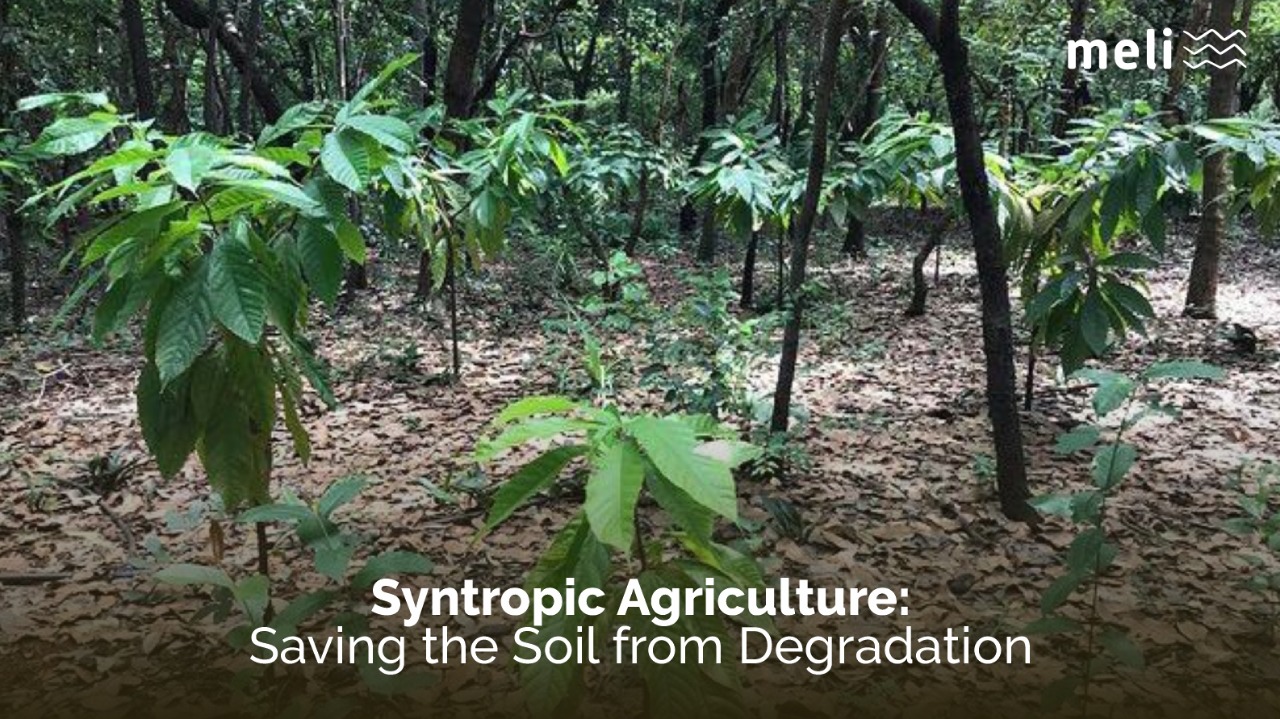Do you know what Syntropic Agriculture is? Come with us to find out about this (not so new!) concept of agroforestry farming system that turns agriculture more sustainable!
Authors: Flávia Diniz and Wandro Cruz
Leia em Português. Auf Deutsch lesen.
Syntropic agriculture is the term for an agroforestry cultivation system (ACS) based on the concept of syntropy, which is characterised by organisation, integration, balance and preservation of energy in the environment.(1) This agricultural aspect is inspired by the natural dynamics of ecosystems that did not suffer from human interference, seeking to provide a more sustainable management.
The concept was conceived and disseminated by Ernst Götsch, a Swiss agriculturist and researcher born in Raperwilsen in 1948. While he was working on genetic improvement research at the institution in Zurich-Reckenholz, he began to question whether it was not wiser to value the improvement of the living conditions of plants rather than genetically altering them so that they survive the shortage of nutrients and proper climatic conditions to which they are subjected in monocultures. Thus, he began to redirect his studies towards the development of sustainable agriculture.
Götsch came to Brazil in 1982. Two years later he acquired the farm “Fugidos da Terra Seca”, located in Piraí do Norte in the state of Bahia, now known as Fazenda Olhos D’água due to the large number of springs that were recovered thanks to the syntropic work that was conducted.(2, 3)
How are the plants cultivated in the ACS ?
In this ACS model, the plants are cultivated in a joined manner, interspersing species of different sizes and characteristics, also known as consortia, and are then arranged in parallel lines, aiming at maximum utilisation of the land. This technique takes into consideration the maintenance and reintroduction of native species. Besides Ernst Götsch’s research, other scientific studies also confirm that the cycle time of consortia is a fundamental factor for the good functioning of ACSs. (4)
The general idea is to accelerate the process of natural succession, in which it is possible to have a high probability of harvesting within 30 days. This is possible through selective weeding, through the removal of small native pioneer plants, and the pruning of trees and shrubs to subsequently distribute them over the soil. This technique is called mulch and provides greater availability of nutrients to the soil. The parts removed from the plants that are not tradable return to the soil in order to fertilize it, and work as a natural NPK injection. It is therefore essential to know and use pruning tools properly for the proper development of the vegetation.(5, 6)
It is important to note that in ACSs, the use of chemical controllers such as insecticides and herbicides as well as the continuous use of chemical or even organic fertilisers which do not originate from the cultivated area itself is not practised. The insects and living organisms that populate the syntropic areas are not seen as infestations, but rather as markers of deficiencies within the system, which help the farmer understand the needs or failures of the crop.(7)
The benefits and difficulties encountered in implementing ACS
ACSs allow the recovery of soils that have suffered degradation in a short period of time, transforming them into highly productive systems, so that when the planting cycles occur, there is an enrichment of the soil due to the availability of organic material remaining from the crops, pruning, and the natural fall of leaves, flowers, and branches. Unlike monoculture (traditional culture) in which, as the planting and harvesting cycle takes place, the soil degrades and loses its nutrients.(8)
One of the main difficulties of implementing agroforestry systems is the resistance of producers and technicians to the adoption of new technologies, which are not practiced nor disseminated on a large scale in the region, whether it be in schools and colleges, agricultural stores, or television programs on rural technologies.
Sharing experiences…
Wandro Cruz, rural technician of Ruraltins and partner of Meli Bees, tells us about his perspectives and experiences with the ACSs: “Here in Araguaína in the state of Tocantins, it was very gratifying to experience the implementation of ACSs with family farmers, because every time I return to those farms, the ACS has something new to offer, as if it were a thank you for bringing that system to that place, the diversity of food and other products, the shelter for domesticated animals, the presence of wild animals, which were not commonly seen there before, the increased fertility of the soil, and especially the recognition of producers who allowed the implementation of ACSs on their farms as a truly viable production system.”
Besides respecting the environment as a whole (flora, fauna, and community), ensuring food sovereignty for the people, as well as looking from the point of view of efficiency and quality in production, ACSs can achieve good self-control against invasive species (those traditionally seen as enemies), providing a high variety of products at moderate to relatively low investment cost (practically once a year in the soil) since there is no need to replant the area every year. Interventions in the system require less use of labour, since the main tasks in the cultivated area are: harvesting, pruning and thinning.
References:
- MONTE, André Luiz Zanela. Sintropia em agroecossistemas: subsídios para uma análise bioeconômica. 2013. 121 f., il. Dissertação (Mestrado Profissional em Desenvolvimento Sustentável)—Universidade de Brasília, Brasília, 2013.
- http://agendagotsch.com/
- Reportagem exibida pelo programa Globo Rural, “Conheça a agricultura sintrópica”, em Agosto, 2017.
- PENEIREIRO, Fabiana Mongeli. Sistemas agroflorestais dirigidos pela sucessão natural: Um estudo de caso. Dissertação (Mestrado em Ciências Florestais) para a Escola Superior de Agricultura “Luiz de Queiroz”/ Universidade de São Paulo. Piracicaba, 1999.
- GÖTSCH, E. Homem e Natureza: Cultura na Agricultura. Recife: Centro Sabiá, 1995.
- VAZ DA SILVA, Patricia Pereira. Sistemas agroflorestais para recuperação de matas ciliares em Piracicaba, SP. 2002. Dissertação (Mestrado em Ciências Florestais) – Escola Superior de Agricultura Luiz de Queiroz, Universidade de São Paulo, Piracicaba, 2002. doi:10.11606/D.11.2002.tde-17092002-135029. Acesso em: 2017-08-17.
- Reportagem exibida pelo programa Globo Rural, “Conheça a agricultura sintrópica” – 2ª parte, em Agosto, 2017.
- IRINEU, Nádia Silvério Oliveira. Dimensões da agroecologia na produção e comercialização de agricultores familiares no Distrito Federal e Entorno. 2016. xi, 96 f., il. Dissertação (Mestrado em Meio Ambiente e Desenvolvimento Rural)—Universidade de Brasília, Brasília, 2016.


This is a comprehensive article…thankyou. Ernest is known as the person who brought back the rain….a hero to many people. His method is a game changer for the whole of society.